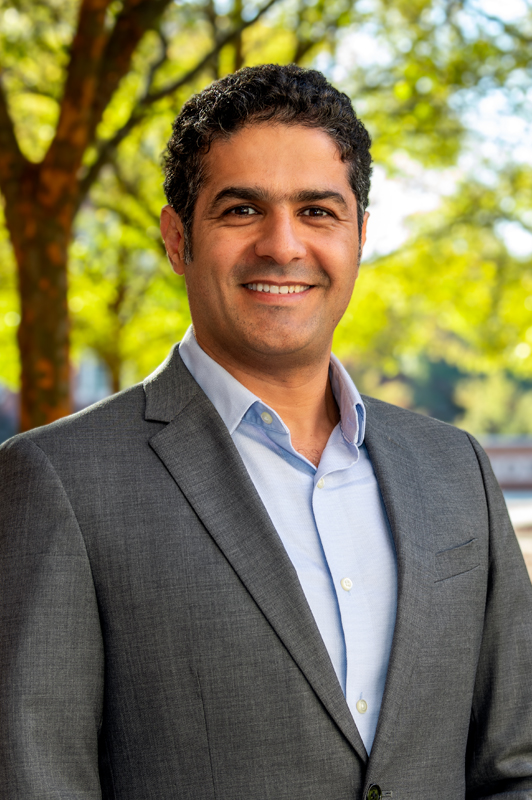Civil and Environmental Engineering assistant professor takes deep dive into morphing skins
Published: Oct 24, 2023 8:30 AM
By Dustin Duncan
Ali Khosravi plans to dive deep into morphing skins on robotic systems designed to burrow deep for measuring soil structures.
Khosravi, an assistant professor in the Department of Civil and Environmental Engineering, is the principal investigator for a $509,232, three-year collaborative grant from the National Science Foundation titled “Elasto-Granular Interactions Between Morphing Skins and Soils.” Paul Bartley, an assistant professor in the College of Agriculture, is a co-PI on this grant, and the State University of New York at Stony Brook is also a collaborator. Auburn is the lead institute with a share of $286,000 from this grant.
The goal is to research flexible burrowing probes for site investigation and underground excavation. These probes are crucial for various development projects, including underground structures, buildings, dams and pavements, as they determine soil characteristics.
“We have some systems that can burrow underground for the purposes of geotechnical engineering, but their mode of action is limited,” he said. “This limitation makes it challenging for the robotic system to replicate the capabilities of animals.”
The limitations of the previous robotic systems led Khosravi to explore the concept of morphing skins. His team has developed a design for expansion and elongation, incorporating frictional components that expand to provide additional anchorage for forward movement. This intricate design necessitates a thorough understanding of the interactions between soil and the materials used for penetration.
“We have a great system in the Material Engineering department that will allow us to do CT scanning of specimens as large as 30 centimeters,” Khosravi said. “At the same time, during these experiments, we will develop numerical models capable of capturing behaviors to gain a deeper understanding of the overall behavior."
Most site characterization techniques rely on vertical probes placed in specific locations because existing systems cannot move laterally. This limitation necessitates engineers to select specific soil spots for probing, leading to multiple tests. Khosravi’s system will move side-to-side, including sensors for measuring soil properties. This capability will be crucial for informing future design processes.
"This system will continuously measure, providing continuous mapping of the entire area in various directions," he said. "We can retrieve the data whenever needed, leave it stationary or set it in motion at will."
Khosravi said parts of the robot can be in several locations and sense if something is happening or movement within the soil.
"For example, if leakage or seepage occurs in a dam, they can sense it and start moving to collect data," he said. "They are all connected like a network."
Khosravi studied biology for a year before designing his scheme. He researched the anatomy of various burrowing organisms — those with legs and those without — to understand how they move.
“At the same time, I looked into the technology that we had available, and that’s when I felt the gap,” he said.
Media Contact: , dzd0065@auburn.edu,
Paul Bartley, assistant professor in the College of Agriculture (left), and Ali Khosravi, Civil and Environmental Engineering assistant professor, are researching research flexible burrowing probes for site investigation and underground excavation. These probes are crucial for various development projects, including underground structures, buildings, dams and pavements, as they determine soil characteristics.


